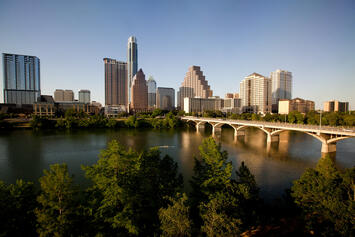
The future shape of post-Covid America is beginning to emerge. As demographic trends and surveys indicate, the pandemic has helped accelerate large, epochal changes in the nation’s geography.
It has reinforced the already existent trend of population dispersion, with people moving both to suburbs and smaller cities in ever greater numbers. The ascendancy of sprawling Sun Belt metropolitan areas, like Dallas-Fort Worth, Atlanta, Houston and Phoenix, has become increasingly clear and undeniable. The 2020 United States Census notes that four of the five counties gaining at least 300,000 people since 2010 were in Texas, Arizona or Nevada. Houston and Dallas acquired far more people than New York, Chicago, Los Angeles or even the Bay Area over the same period.
In contrast, the big blue coastal cities have all experienced meagre population growth in recent years and, since 2020, serious population decline. In the past year, the biggest migration losses took place in three key states: New York, New Jersey and Illinois. Survey data suggest this trend will continue. Four in 10 New Yorkers, notes pollster John Zogby, are considering a move out of the state. In California, high housing prices are driving a decline in population from an area with historically high population growth; last year, the state lost population for the first time in living memory.
This shift is in part the result of high taxes and regulatory policies, which tend to be far harsher in dense urban areas, leading to high housing costs. More than 85 per cent of the difference in the cost of living between the more expensive metropolitan areas and the national average is attributable to higher housing costs. California, which has sought to limit suburban expansion, struggles to build enough housing to meet even anaemic population growth.
A recent survey found that the number of Americans moving from their home regions is at its highest level on record. The highest percentages of home-buyers leaving are from prime ‘superstar’ cities like San Francisco, Los Angeles, New York, Washington, Seattle and Boston. Similar patterns can be seen in the movement to suburbia. Americans have been heading to the suburbs for generations, growing from 13 per cent of the metropolitan population in 1940 to 86 per cent in 2017.
Nor does it seem likely that most people will return to the city. A Los Angeles Times / Reality Check Insights national poll, taken after the November 2020 presidential election, found that just 44 per cent would pick a big city once again. Just 32 per cent of big-city dwellers state that they would definitely move away if they could; this is notably greater than the quarter of those who live in suburbs of big cities and small cities who feel the same way.
Read the rest of this piece at Spiked.
Joel Kotkin is the author of The Coming of Neo-Feudalism: A Warning to the Global Middle Class. He is the Roger Hobbs Presidential Fellow in Urban Futures at Chapman University and Executive Director for Urban Reform Institute. Learn more at joelkotkin.com and follow him on Twitter @joelkotkin.
Photo: Ed Schipul via Flickr, CC 2.0 License












